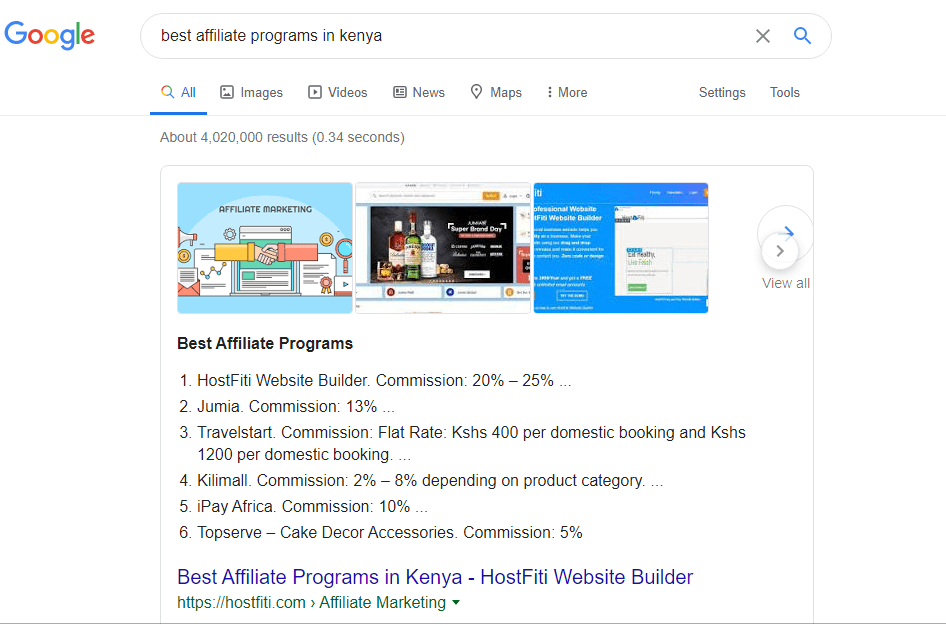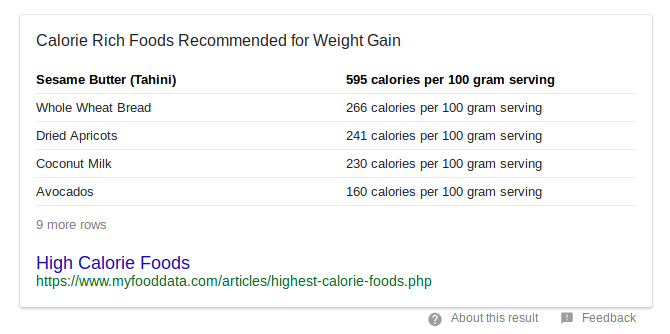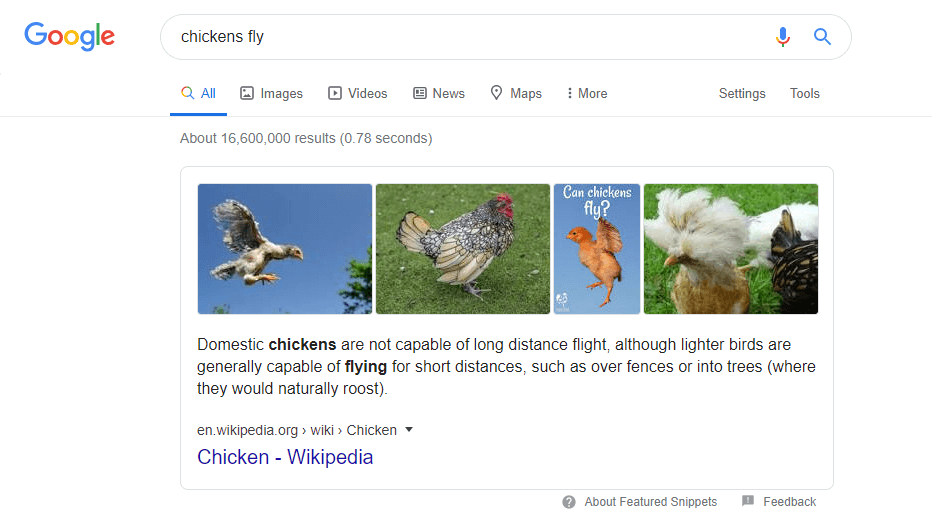In this article we look into what Google featured snippets are, why they are important for SEO, their types and steps to take to obtain them.
What are Featured Snippets?
Featured snippets or position zero results are the informational content that shows up in Google’s Search Engine Results Pages (SERPs) immediately after the ads and sponsored posts (if available). Google shows what it considers high-quality content in this space because it’s focused on fulfilling user intent. Featured snippets are also available on mobile and they come in different formats and styles.
This search for “best affiliate programs in kenya” features a snippet from our website:

This text is taken directly and automatically from the webpage that is linked to in the snippet. Compared to Universal Search integrations, the Featured Snippets will not push an organic result off the first page. This is the reason we talk about Featured Snippets being shown at position 0.
It is obvious from the above screenshot that websites appearing in the featured snippet box have a big advantage over the other websites present in the first page of the SERPS, in terms of CTR (Click Through Rate).
What is more interesting though is that Google may show a website in a featured snippet box, even if it is less ‘powerful’ than other websites.
Why Are Featured Snippets Important for SEO?
Featured Snippets impact SEO in two ways.
First, Featured Snippets are an opportunity to get more clicks from the organic search results… without higher Google rankings. According to Search Engine Land, a Featured Snippet gets approximately 8% of all clicks.
Second, Featured Snippets increase the number of “no-click searches”. In other words, when a Google user doesn’t click on any of the search results.That’s because the Featured Snippet often gives someone the answer they’re looking for.
So, before you decide on a specific keyword, it’s important to note whether or not the search results have a Featured Snippet. If they do have, according to an industry study by Ahrefs, you’ll get fewer clicks compared to SERPs without a Featured Snippet.

When there’s a featured snippet at the #1 position, it only gets ~8.6% of clicks (on average), while the page that ranks right below it will get ~19.6% of clicks (on average).
How does it compare to a regular #1 ranking page with no featured snippet above it? That page will get ~26% of all clicks.
In other words, it looks like the featured snippet is stealing clicks from the #1 ranking result.
Types of Featured Snippets
There are 4 main types of Featured Snippets that appear most often in Google’s search results.
1. Paragraph snippets

Paragraph snippets are the most common and seek to provide searchers with a direct answer to their query. Often, they’re displayed alongside an image chosen from another source.
According to Search Engine Journal, you’ll get paragraph snippets for keywords including terms such as:
- How to do/get…
- Who is…
- Why is…
- What is…
2. Numbered list snippets

This is a list of items presented in a specific order. Google tends to use Ordered Lists for queries that need a set of steps or rank things in a specific order.
3. Bulleted list snippets

This is Google’s way of presenting a list of items that don’t need to be in any particular order and formats the headings of a list post into bullets to show a compressed view of the content.
4. Table snippets

For structured data, Google displays a table snippet for better readability. It doesn’t grab the exact table from the content — instead, it re-formats the data to make it more useful.
How to Optimize For Featured Snippets
There’s no magic formula when it comes to Search Engine Optimization (SEO), nor is there one for featured snippets. However, there are guidelines you can implement to improve your pages’ chances. Here are four steps that can help.
Step 1: Find Featured Snippet Opportunities
Your first step is to look for a search results page that already has a Featured Snippet. (In other words, Featured Snippet opportunities).
That way, you KNOW that Google wants to show a Featured Snippet for that term. In fact, they already do! Also, you can see what type of Featured Snippet Google wants to show for that term (the paragraph, numbered list, etc.). Which makes optimizing your page for that specific type of Featured Snippet super simple.
There are two ways to look for SERPs that have a Featured Snippet.
First, you can search for a bunch of keywords one-by-one. So if you have a list of potential keywords to target, you can search for each one and jot down whether or not the results for that term have a Featured Snippet.
Note: The content Google selects for featured snippets can vary depending on how users phrase their queries. For example, if we search for “chickens fly”, Wikipedia takes the spotlight:

However, the search “can chickens fly” returns a different featured snippet:

These examples demonstrate how important keywords are when it comes to identifying opportunities to target featured snippets. Notice that Google highlights part of the text within its answer boxes depending on the query. These terms provide valuable insight into the kind of content it prefers.
Second, if you have the budget for it, premium keyword research tools such as SEMrush and Ahrefs will also tell you which pages on any given website appear in answer boxes. You can then keep track of both your own featured snippets ones your competitors currently have.
Step 2: Format Your Content to Favor Direct Answers, Lists, and Tables
When it comes to featured snippets, formatting is critical. Answering direct questions in your posts and pages is one strategy, but Google also favors lists and tables depending on the search query.
At this stage, you should have a list of existing posts that you can optimize for featured snippets or new ideas to write about. You’ll now want to determine the best format for your content to deliver answers to the questions you’re targeting.
Here’s a quick breakdown of which element you should focus on depending on the type of content you’re publishing:
- Use paragraphs to provide direct answers to simple questions.
- Create lists to break down steps in tutorials for targeting more in-depth questions.
- Focus on tables to answer queries that involve large amounts of data.
Whichever elements you use in your content, concision (using only the words necessary to convey an idea) is essential if you want to maximize your chances of appearing in an answer box. It’s also important you segment your content using subheadings. Some studies show that most answer boxes feature paragraphs, and tend to be 45 words long.
Step 3: Target as Many Queries as Possible Within Each Individual Post
If someone asks you “how do website builders work”, they’ll probably have a lot of related questions as well, such as:
- What are website builders?
- What are modules or blocks?
- How do drag-and-drop website builders work?
- What are the best website builders?
All those questions can also double as long-tail keywords. Together, they provide perfect opportunities to create in-depth content that can outrank your competition, and target multiple search queries within one post.
For the example above, each question could easily be used in a subheading, with direct answers appearing in the following paragraph. The more queries you can address within one post, the better your chances of getting that content into a featured snippet.
This makes Frequently Asked Questions (FAQ) pages fantastic opportunities to maximize your chances of getting featured snippets.
Step 4: Strengthen Your On-Page SEO
You’re probably already familiar with the basics of on-page SEO, which include:
- Proper keyword use
- Using informative titles and subheadings that reflect the topic at hand
- Writing engaging meta descriptions that inform potential visitors what your page contains
- Including alt text for your images
- Creating URL slugs that match each page’s keyword
There’s a lot more to on-page SEO than those basics. However, when it comes to featured snippets, these are the techniques you want to focus on. Since you’re optimizing existing or new content to target specific questions, you need to make sure that you use those keywords or phrases accordingly.
Conclusion
Obtaining the first spot on a SERP means that your page gets, on average, about 26 percent of all clicks for that search. Working to earn that place is still key, but you also want your content to appear in featured snippets whenever possible.
To maximize your chances of landing your coveted featured snippet positions, you’ll need to follow a few guidelines:
- Find featured snippet opportunities.
- Format your content to favor direct answers, lists, and tables.
- Target as many queries as possible within each individual post.
- Optimize your on-page SEO.
Do you think this article will help someone? Don’t forget to share.
Subscribe to be notified about new marketing, entrepreneurship & web development posts.
Make a Professional Website using HostFiti Website Builder
Having a professional business website helps you establish credibility as a business. Make your professional website using our drag and drop website builder in minutes and make it convenient for your customers to contact you.
Starting from

